The Legend of Zelda: Ocarina of Time Review – Is it Worth Playing Now?
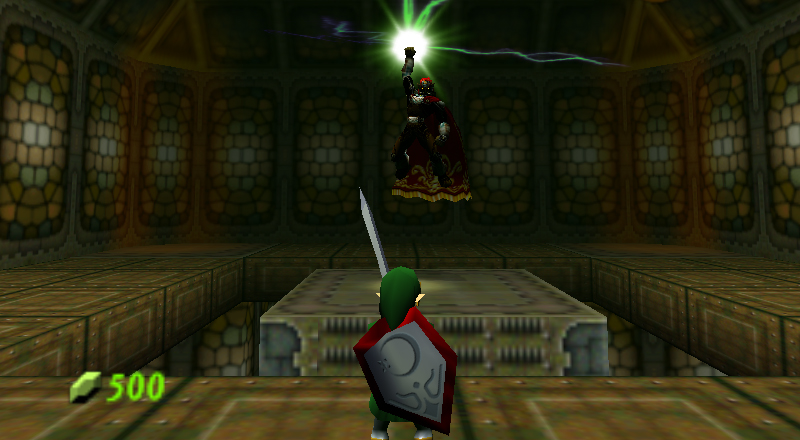
As was the case for many people when it released, The Legend of Zelda: Ocarina of Time marked the first time a game truly managed to resonate with me in a way comparable with great works of other mediums.
In the same way a great novel or a film leaves its mark on you, Ocarina of Time showed me what games were capable of achieving. And like me, it had a profound effect on the millions who played it, forever changing the gaming industry.
But now, 19 years after its release, it is interesting to take a look at the game many still herald today as the Greatest of All Time. Whilst appreciating its influence and respecting its importance, I’ll attempt to take a look at Nintendo’s masterpiece through a contemporary lense.
So let’s dissect the Good, the Mixed and the Bad of Ocarina of Time.
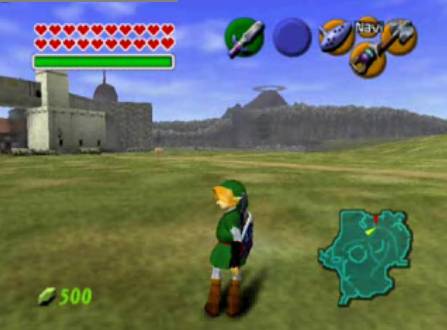
The Good
Sense of Adventure
The enduring feeling I was left with, even years after finishing OoT, is the sense of awe and wonder the game instilled in me. I had never played a game with a world this big and well thought-out, and even playing it today the way it builds up to your release into the expanse of Hyrule Field is masterful, teaching you the game’s mechanics through Kokiri Forest and the Deku Tree in a natural distinctly un-patronising way.
As you proceed through your quest you really feel like you’re discovering a living, breathing world, thanks to how the game teases other sections of Hyrule in the background. Death Mountain is more often than not always looming in the distance, always teasing you to explore more and offering a reference point helping to knit the world together.
Zelda games have always been good at this to a degree, but with the possible exception of Wind Waker I’d argue OoT is the best game in the series at evoking this sense of wonder into the player.
Music and Sound
I almost put this as the first point, as the sound design is the one element of the game that both has not aged and has not been bettered by a game of any series since. In fact, if anything I’d say my appreciation for the sound of this game has actually grown over the years.
It’s not just the music, but the score really is unparalleled. Every song – and I mean every song – just fits so well within the context in which it plays that the game would be so much less without it. From the mystical jingle of the Lost Woods to the tribal drum beats of Goron City, each tune will engrave itself permanently into your mind.
But as I say, it really isn’t just the music that’s great. Every sound effect is perfect; The way your sword sounds on different objects, the small ‘clink’ when you equip your shield, the way your footprints sound on different types of ground – the little details the developers paid attention to with the sound design really typifies the care they gave to the game as a whole.
Sound and music was explicitly a focal point for them, with music being a key theme of the game as a whole. The fact that they allow the player to change each note they play on the Ocarina by tilting the analogue stick to alter the pitch -something you never actually need to do in any of the game’s songs – shows that they were keen for the player to toy with the music and develop a personal relationship with the instrument.
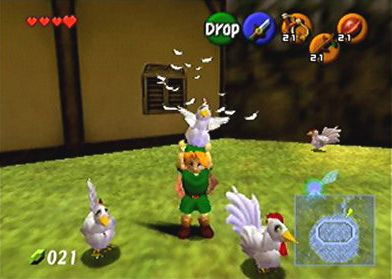
The ‘Epic’ Feel
This is a small point but one that has become more pertinent as time has gone on. No Zelda title since or before OoT has quite captured that sense of ‘epic’ quite like it. That je-ne-sais-quoi, medieval, fantastical, Lord-of-the-Rings-esque atmosphere that the game has is just utterly on-point, and whilst subsequent games in the series have tried to capture it, (particularly Twilight Princess) none have matched it.
Dungeon Design and Context
It may be quite unusual but personally I don’t find the dungeons to be the most appealing elements of Zelda games. For me they are rather a means to an end. I.e. what item will I be rewarded with? How will the story progress as a result of this dungeon? How will the outside world change as a consequence of beating it?
The Dungeons in OoT however are so well designed and so unique and atmospheric that I found myself enjoying them as ends in themselves. What adds to their value is how they fit in so logically with the outside world rather than being just some endless cavern that happens to be there. Jabu Jabu’s Belly is the belly of a giant fish that is tormenting the Zoras, The Shadow Temple is an ancient lair of the Gerudo, the Water Temple is… well, ok maybe they aren’t all that amazing. But still.
Mystery
I’ve spoken about it in some of my other reviews of Nintendo games, but something the company’s more recent titles have shed themselves of is that sense of mystery they allow the player. Ocarina of Time doesn’t give everything on a plate for the player, it doesn’t hold your hand the whole time and give you constant clues as to where to go.
Respecting the player and allowing them to discover things for themselves is part of what makes Nintendo games great – and OoT has it in spades. It’s far more satisfying to decipher a mysterious clue as to where to go next, or how to solve a puzzle, than be told the exact coordinates or method by a robot sword that’s always a second away if you need anything.
Nintendo seem to have lost this in favour of worrying about players getting stuck or frustrated – a problem nobody seemed to complain about in the first place. They’re obsessed with answering a question no one asked and as a result just serve to patronise the player, and sadly dilute their games, making them transparent and not as satisfying.
This is turning into a generic rant, but suffice to say OoT does not patronise the player, and as such the sense of reward as a result of your actions is deep and tangible.
Variety of locales
A fair criticism of some other Zelda games is their lack of variety, particularly in terms of locales. OoT suffers no such criticism, and takes you on a wonderfully varied adventure, deep into great lakes, up a huge mountain, across a desert, through a forest, in a castle – the list really does go on and the world of Hyrule it builds is just excellent.
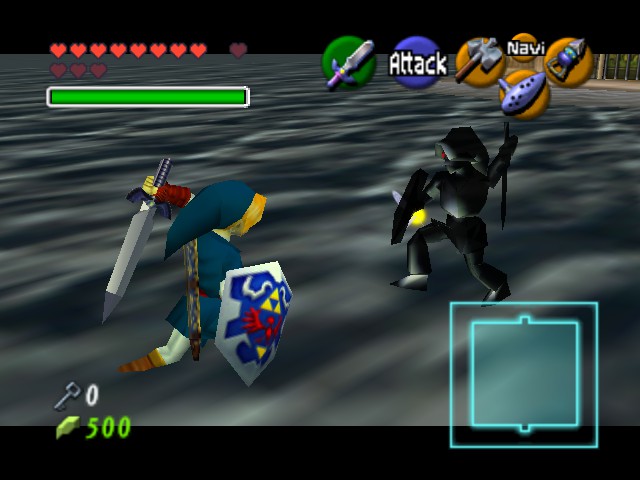
Controlling Link
There’s a reason the latest Zelda games are almost identical in control-scheme to OoT, and that’s because they are just so well done. The Z-targeting system is astonishingly tight and intuitive, particularly considering Nintendo weren’t basing it on anything or building upon an established system – this was the first time they’d brought the series into 3D.
The system does mark a shift in combat style for the series in that you rarely fight several enemies at once, unlike the 2D predecessors which saw you bouncing around rooms dodging fireballs and hitting switches as you fought. However what it loses in terms of hectic chaos it gains in subtelty and variety, with different sword swings and shield-raising combinations better depending on the enemy. It’s an excellent system that still holds up today.
Diversion
OoT is often criticised for lacking in terms of things to do in the game other than the main quest. I actually disagree with this, and think these criticisms only came about following the release of its sidequest-filled sequel, Majora’s Mask.
This is an unfair comparison, because MM is a game built around sidequests, trading the epic story with a character-driven adventure, which is not what OoT ever set out to be.
In OoT, there is actually lots to do that is both avoidable and optional in completing the game, and I think features with that criteria qualify as a sidequests. Aside from the 36 pieces of Heart scattered across Hyrule, Link finds himself on a mask trading quest, a quest for the Big Goron Sword, hunting Poes, playing mini games in both Castle Town and Kakariko Village, looking for extra bottles, planting beans, and of course perhaps the best diversion in any game ever – fishing.
There is plenty going on that helps augment Ocarina’s rendition of Hyrule and make it feel alive. It has lovely little nooks and crannies hidden everywhere, and is much less sparse than, say, that of Twilight Princess.
The Mixed
Challenge
One thing that can be said for every 3D Zelda game is that they don’t make difficulty and challenge a core feature, like for instance games in the Dark Souls do so well. You will probably die a few times, particularly if you haven’t been hunting for extra Heart Containers, but really you won’t be stuck with the game’s puzzles too often and enemies don’t really put up too much of a fight.
Whilst I’d say a Zelda game’s appeal doesn’t come from the raw challenge, it could be argued that the puzzles could be made more difficult, or the enemies had a bit more about them.
The Master Quest actually helps to solve this issue, and for me is the definitive experience of the game.
Graphics
For its time, OoT looked fine. Perhaps not as impressive as some as its contemporaries like Banjo Kazooie, but still nice and some of the boss models in particular look great.
Today however, the textures in particular really show their age – and this is where the excellent 3DS remaster comes into its own, with wonderfully re-done effects that luckily don’t betray the original game’s style and tone like some HD remakes can do.

The Bad
Linearity
The one big criticism that I do concur with that gets leveled at the game is its linear nature. Whilst the world is open, with sidequests and things to see along the way, the game’s quest has to, for the most part, be completed in a strict linear fashion – with a weapon from a dungeon required to beat the next dungeon, and so forth. Some of the later dungeons are interchangeable, but the real lack of flexibility is evident when you compare it to the very first game in the series – The Legend of Zelda for the NES.
In TLoZ, you could complete the game without a sword if you so chose. In OoT, the game makes sure you get the sword and shield before you even leave the tutorial area of Kokiri Forest. You will always definitely get every treasure and weapon the game has on offer, because you can’t progress to the next step without them.
What would be great – and fortunately this looks like the direction in which the franchise is going – is if you could complete the quest as you saw fit, stumbling across dungeons or working out subtle hints and clues as to where they are that are given to you by the world.
It might be a bit much to ask, but OoT definitely errs too far on the side of linearity, which does curb the sense of adventure and freedom.
Zora Domain
An very specific oddity more than a criticism, but when you finish the game you’ve ‘helped’ out the majority of the main places in Hyrule. The Gorons are happy, Hylia has its water back, etc… yet Zora’s Domain remains frozen? This must be due to cut content, but still it leaves a nagging feeling that not quite everything has been sewn up by the end. Even a glimpse of a thawed Domain in the end credits would have been enough!
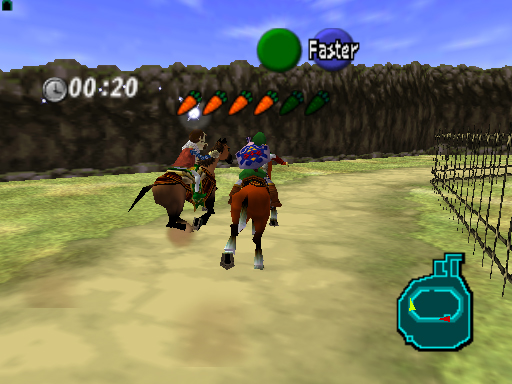
Overall
As you can tell by the lack of negative points, I still think the world of this game. Its legacy and influence notwithstanding, in its own right the game is still a joy to experience today as it was in 1998. I’d still recommend it over Twilight Princess and Skyward Sword – putting it a joint second with Wind Waker after the perfect Majora’s Mask in terms or all-time ranking.
If you haven’t played the 3DS version yet, I highly recommend you do so – it’s currently on Amazon here.